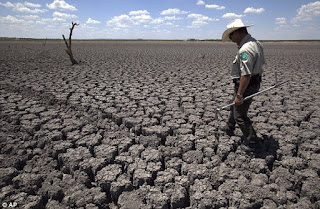SOILS AND FOUNDATIONS
- - - - - - - - - - - - - -
OVERVIEW
A familiar saying is that a house is only as good as the foundation it is built on. Well that is only partially true because a foundation is only as good as the soil it is built in. Unstable soil is always moving and If a foundation is built on an unstable substructure it is only a matter of time before a foundation failure occurs. This foundation catastrophe is extremely expensive to fix and many new homes begin to have serious foundation problems within 5 years of construction due to inferior foundation systems.
- - - - - - - - - - - - - - - - - - - - - - - - - - - - - - - - - - -
SOILS
- Clay
- Sand
- Sandy Loam
- Limestone
A licensed Soils engineer will bore a 12" to 18" hole into the soil and take soil samples all the way down to a stable soil substrate. The soil samples are then taken to the lab and tested for expandable properties among other things. Once their testing is completed they produce a report and a recommendation of the the most suitable foundation system to be employed.
This will not always mitigate 100% of the risk because no one can guarantee the future movement of the earth but it will give the best possible foundation scenario.
- - - - - - - - - - - - - - - - - - - - - - - - - - - - - - - - - - -
FOUNDATION OPTIONS
The Post-Tension Foundation System consists of a cable that has a plastic jacket
to help the cable slide when it is tightened. On one end it has a steel
plate that is embedded in the foundation wall. On the opposite end it
has a another steel plate and a nut that is exposed on the foundation
wall.
After the concrete is poured, the nut is tightened thus providing
the tension needed to hold the foundation together. Too much tension
and the cables can snap. Too little tension and it looses its
effectiveness. There is no reinforced steel in the footing and stem wall to strengthen the concrete.
The cables are laid out in a
grid held up by a small stand so the cable is in the center of the
slab. In this system there is no reinforced steel what so ever. The
foundation footings are not reinforced and very susceptible to cracking
and falling apart. Over the life of the foundation the cables are to be
inspected and adjusted, but an unsuspecting home owner will never
know. When the foundation fails they assume the blame for not
preforming the required maintenance.
Reinforced Steel Foundation System
This
foundation system is a typical foundation that is utilized in most
areas of the country. It is far superior to the post-tension system but
again it is susceptible to the conditions of the soil. The deeper into
the soil substrate the foundation structure is constructed, the higher
the success rate becomes.
As you can see in the reinforced
steel foundation, a lot more steel is used and is infinitely stronger.
This system also has a series of interior footings that are also
reinforced. It does take a lot of reinforced steel as well as labor to
construct but so much more cost effective than repairing a failed system
which can run tens of thousands of dollars.
As shown by the diagram, the steel reinforced foundation is deeper into the soil and has a lot of steel to strengthen the concrete. Over time many soil types can shift due to weather conditions and the movement of the earth. A foundation with significant steel will contribute to holding the concrete together under many circumstances.
Caisson & Grade Beam Foundation
The
Caisson & Grade Beam foundation provides the best protection in an
unstable soil conditions. It is also the most expensive system as
well. This option may not be required in all unstable soil conditions
depending on the results form soils testing.
A series of auger holes are bored
down through the unstable soil to stable soil. A reinforced steel cage
is lowered down into the hole and then filled with concrete. A
reinforced steel and concrete foundation beam is formed linking all the
caissons together to form an extremely ridged and stable grid that is
resting on the stable soil below. In this case no matter what the
unstable soil does, it will not affect the foundation.
CONCLUSION
It is always advisable to consult with a soils engineer to determine the best foundation option for the soils on any given property. There exists a thriving industry fixing foundations for homes with unsustainable foundations where the price tag can be upwards of tens of thousands of dollars. The solution to this problem is in the beginning with proper soils testing and foundation engineering to provide a strong and sustainable home to last into the next century.
At Woodscape Homes our quality starts in the ground
and works it's way to the top.










Comments
Post a Comment